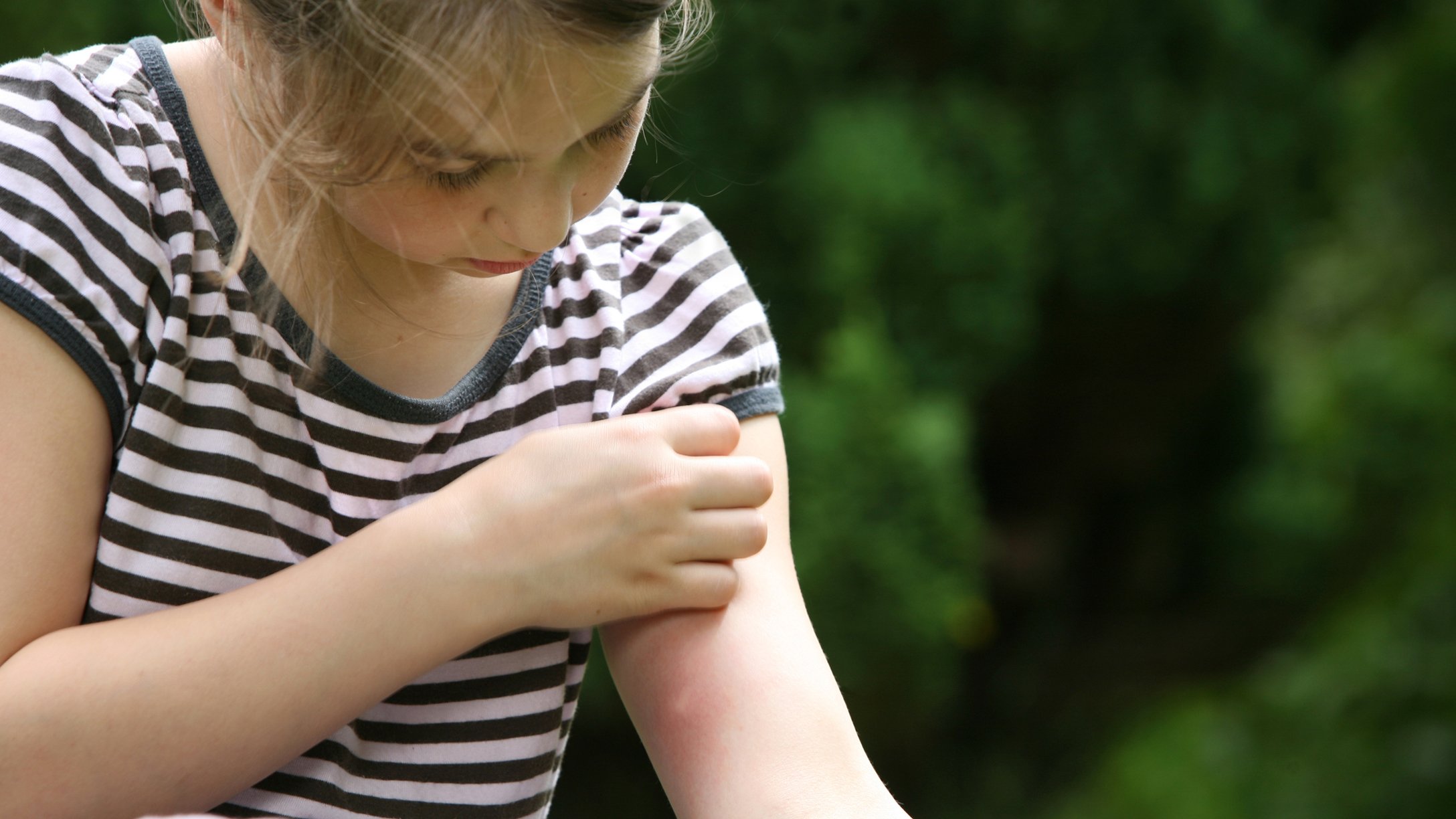
In this article
If you spend any time outdoors with your kids, chances are high that they’ll experience some sort of insect bite from mosquitos, spiders, ants, and even fleas (especially if you have pets). Tick bites are often a source of concern because ticks carry germs, including the one that causes Lyme disease, and release these germs into the bloodstream when biting humans.
According to Rebecca Eisen, a research biologist for the Centers for Disease Control and Prevention, Lyme disease is on the rise due to ticks becoming more widely distributed in recent years. “Even though you may live in an area where you didn’t have ticks in the past or your parents don’t remember having ticks, the distribution is changing,” Eisen told The New York Times. “More and more people are at risk.”
Is a tick bite serious?

For the most part, if parents are sure to watch for symptoms after a child’s tick bite, most tick-borne illnesses can be treated with a course of antibiotics. Also, according to the CDC, if you remove a tick within 36 hours, the chances of contracting Lyme disease are very low.
“We’ve dealt with lots of tick bites over the years,” Wisconsin mom Jennifer L.W. Fink, told Mom.com. The writer/founder of BuildingBoys.net and her family live in a wooded area but the benefits of enjoying the outdoors outweigh her fears of tick bites and Lyme disease. She relies on careful inspection of her kids post-outdoor play, as well as using a DEET spray before sending them outside.
How to check for tick bites

iStock
After spending time outdoors, check your children (and yourself) for ticks. Do a thorough inspection, as bites often go unnoticed until the tick is engorged with blood and falls off the body. While tick species vary slightly, look for a small eight-legged brown oval or round bug.
Areas to pay attention to include under the arms, in and around the ears, inside the navel, on and around the scalp (and beneath hair), the backs of knees, between the legs, and at the waist.
Types of ticks
There are several varieties of tick, including the black-legged tick, the Lone Star tick, and the American dog tick — each of which carries different germs that can transmit tick-borne disease. The CDC provides information on where each type of tick is most commonly found, and the germs it may carry.
What to do if your child has a tick bite
According to Dr. Sears, because ticks carry the germ that causes Lyme disease as well as other germs, removal must be careful and complete. First, clean the area with an alcohol-soaked cotton ball. Using a blunt tweezers, grasp the tick as close as you can to its mouth, and pull up and out from the skin. Do not twist or crush the insect.
Avoid word of mouth or folklore remedies like heat application, which may cause a tick to burrow further into the skin. Also avoid “painting” the tick with nail polish or petroleum jelly and waiting for it to detach.
If the tick’s head is embedded into the skin, pinch up a fold of the skin between your thumb and forefinger and use a sterilized razor blade or scalpel to scrape the skin containing the head and mouth. Otherwise, consult a doctor for extraction.
The CDC does not recommend saving a tick for further testing, as many tick-testing labs do not adhere to the same quality standards as medical laboratories.
When to see a doctor

iStock
If you live in an area where Lyme is found (most frequently the upper midwest and northeastern area of the US), you should keep an eye on the site of the tick bite in case the telltale bull’s-eye rash appears. However, the rash does not appear in all cases of Lyme, so watch for flu-like symptoms and swollen lymph nodes. If any of these symptoms begin, or you or your child have other symptoms following a tick bite, make an appointment with your child’s pediatrician to check for Lyme and other tick-borne illnesses.
How to prevent tick bites
Ticks live in grassy, brushy, and wooded locales, and sometimes on animals. You can get a tick bite from contact with a family pet, or even in your own neighborhood or backyard. When outdoors, avoid tall grasses, and when hiking, stick to designated trails, walking in the center.
Though bites can occur year-round, ticks are more active when it’s warmer. If you know your area has a large tick population, treat your clothing and gear with products containing 0.5% permethrin. Also use an Environmental Protection Agency-registered insect repellent that best suits your family.




